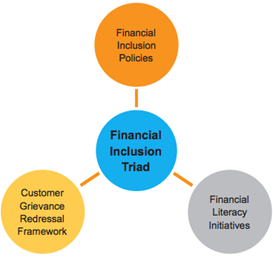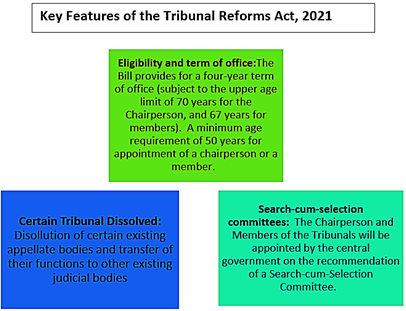Thursday, 19th August 2021
Four-point Framework for the UN Peacekeeping Forces
In News
The External Affairs minister of India proposed a four-point framework for peacekeeping, at a recent UNSC meet.
About the News
- India has proposed an Four-point framework that would lay out a possible architecture for securing UN peacekeepers to meet contemporary threats.
- The external affairs minister stated the importance of a stable and strong ecosystem of technology and innovation for the UN peacekeeping operations in complex environments.
- The 4-point Program is also in line with the Strategy for the Digital Transformation of UN Peacekeeping which seeks to advance the use of technology across the Action for Peacekeeping (A4P) themes, including performance, safety and security, politics, protection, and Peacebuilding.
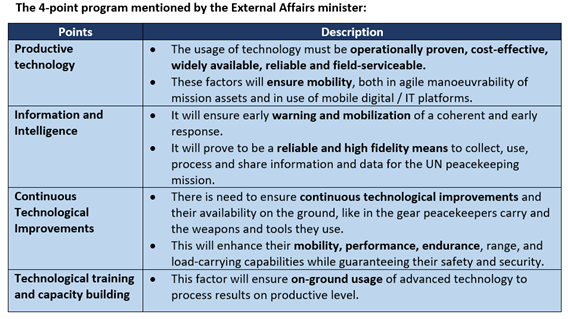
Source:
Appointment of SC Judges
News
The five-member Supreme Court collegium have recommended 9 judges for appointment to the Supreme Court.
About News
- Recently, the SC recommended names of judges for appointment to the SC from the states that already have adequate representation in the Supreme Court like Gujarat, Kerala, and Karnataka.
- Names were not recommended from the states that have remained unrepresented since a long time like Odisha, Chhattisgarh, and Northeast.
- In the current appointment recommendations, the collegium overlooked two important criteria given by the 9-judge bench of SC in 1998- equitable representation to various regions and religious communities.
- Exception in the 1998 judgment:
- Currently, the Supreme Court, which has a sanctioned strength of 34 judges, including the CJI, has been functioning with only 24 judges.
The process for appointment of Judges to the SC
- As per article 124 of the constitution, every judge of the Supreme Court shall be appointed by the Presidentby warrant under his/her hand.
- It is obligatory for the President to take into account the opinion of the Collegium, headed by the CJI, consisting of at least four senior-most judges of the Supreme Court.
- Even if two judges give an adverse opinion, the CJI should not send the recommendation to the Government.
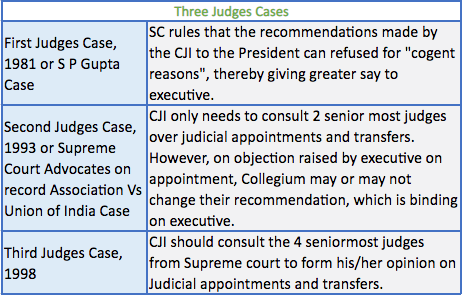
Source:
Initial Public Offerings (IPOs)
In News
According to RBI article on the 'State of Economy', the year 2021 could turn out to be India's year of IPO as the domestic market is upbeat with public issues of the domestic unicorns.
Key Findings of the RBI article
- The amount of money raised in IPOs this year has reached $8.8 billion, already surpassing the totals of the past three years.
- Debut offerings by Indian unicorns, like Zomato, oversubscribed 38 times, attracting bids worth $46.3 billion.
- The USD 2.2 billion proposed listing by a payment and financial services app symbolizes investor excitement surrounding India's digitalization- digital payment solutions, e-commerce, and logistics.
- These listings coincide with a broader rush by Indian companies to tap the market and the FOMO (fear of missing out) factor driving investors, which have taken the benchmark indices to records.
What are Public Issue and IPO?
- Public Offer or Public Issue: It is defined as the process of issuing securities of a company to new investors and making them a part of a company’s shareholders’ group.
- Public Offer is made to raise more funds and infuse more capital in the company for its financial needs and growth.
- Public Offer has been categorised as Initial Public Offer (IPO) and Follow-on Public Offer (FPO).
- IPO: When a company which is not yet listed on any stock exchange, i.e. it is an unlisted company and makes a fresh issue of its securities or an offer of its existing securities for sale for the first time to the public, it is known as an Initial Public Offer or IPO.
- IPO allows the company to list and trade its securities on the different stock exchanges and raise a large amount of capital.

- The SEBI (Issue of Capital and Disclosure Requirements) Regulations, 2009, otherwise known as the SEBI ICDR lays down the rules regarding the public offer in India.
- Additionally, the Securities Contract (Regulation) Act, 1957, the Securities Contract (Regulation) Rules, 1957 and the Companies Act, 2013 provide the legal compliances and process followed for filing an IPO.
Source:
- 'Markets on fire': 2021 may turn out to be India's year of IPO, says RBI
- Definition of 'Ipo'
- SEBI Guidelines for IPO: Guidelines for Making Public Offer in India
- Initial Public Offering (IPO)
Image Source:
Mental Healthcare in Students
In News
Recently, the Delhi High Court issued notice to the Delhi government on a petition seeking to implement the Mental Healthcare Act 2017 at schools and colleges for the benefit of the students.
About the News
- The HC sought response from the Institute of Human Behaviour & Allied Sciences on a petition by a 17-year-old student, seeking to mandate the presence of clinical psychiatrists, counsellors, social workers and mental health professionals in all schools and colleges.
- The petition relied on the National Mental Health Survey of India 2015-16 to argue that children and adolescents are vulnerable to mental disorders, and that current health systems do not prioritise mental health.

What is Mental Health and how is it connected to Students?
- Mental health: It is an integral part of health and is more than the absence of mental illnesses. It is the foundation for well-being and effective functioning of individuals.
- Early start: Studies have revealed that most mental disorders emerge by early adulthood and are associated with a substantial delay in treatment. Nearly half of all mental health conditions originate before the age of 15.
- Progression: Mental health in children manifests in many ways, from insomnia to eating disorders to emotional swings to self-harming, all of which can be treated given the right interventions. Untreated or inadequately treated mental illness is associated with progression to more complex disorders, school dropout, addiction, etc.
- Ripple Effect: Mental health problems can affect many areas of students’ lives, reducing their quality of life, academic achievement, physical health, and satisfaction with the college experience, and negatively impacting relationships with friends and family members.
- Economic Concerns: Mental disorders place a considerable economic burden on those suffering from them – the NMHS (2015-16) revealed that the median out-of-pocket expenditure by families on treatment and travel to access care was Rs. 1,000-1,500 per month.
Factors Contributing to the Mental Health Disorder
- Competitive Environment: The high aspirations, uncertain career, and monetary conditions to be the main stress source. The students preparing for competitive exams in their adolescence leads them to lack social skills and poses mental health dangers.
- Discrimination & Harassment in Educational Institutions: In less than a decade, more than 25 Dalit students in India have died by suicide due to caste discrimination and institutional casteism in educational institutions such as University of Hyderabad, AIIMS, and IIT.
- Ragging (despite anti-ragging laws) and targeted harassment along caste, class, gender, and sexuality lines are also prevalent.
- Miniscule GDP contribution: The Indian government spends only 0.34% of its GDP on healthcare, and a fraction of that on mental healthcare. Bangladesh spends almost eight-times more of its healthcare budget on mental health. The corresponding number for developed countries is around 5% on average.
- Lack of Mental Health Professionals: India is estimated to have 75 psychiatrists per 100,000 people. The desirable ratio is at least 3 psychiatrists per 100,000 people. Even, seeking professional help for mental health issues is discouraged in our societal setup.
- Stigma: The biggest problem with mental health is the stigma attached to it. Despite the steep rise in mental health issues and the surge in dialogue regarding mental health, there remains a common disregard about mental health.
- Lack of awareness and quick diagnosis: Most of the time students are unable to realise they are facing any such problem and credit their bad mood to simply “feeling low”.
- Increased screen time: Multiple studies show that increased social media and screen time contribute to anxiety, low moods, sleep deprivation, low self-esteem.
- Complexities with Mental disorders: Mental disorders are known to be caused by a complex interaction of biological, social, environmental, cultural, and economic In countries like India, the social determinants of health like employment, education, living standards, environment, access, equity, and others contribute significantly to both causation and recovery.
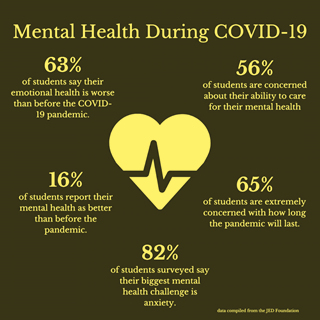
Action steps to support emotional well-being, reduce suicide, and reduce substance abuse
- Law for Mental Health: The Mental Healthcare Act, 2017 provides the legal framework for providing services to protect, promote and fulfil the rights of people with mental illnesses. These are in line with the United Nations Convention on Rights of People with Disabilities.
- Mental Health Professionals: Currently, Psychiatry is tested as a part of medicine, and its weightage is small enough that one can get through the MBBS programme without studying it. The number of physicians catering to mental illness needs to be increased by training the undergraduate MBBS students.
- Teaching life skills: Supporting life-skills education for students is valuable in teaching healthy ways to cope with the stress of college life. Among the life skills that are important to a student’s well-being are managing relationships; problem-solving; decision-making; identifying and managing emotions; healthy living; and finding life purpose, meaning, and identity.
- Identifying students at risk: It is important to identify students at risk for mental health problems and suicidal behaviour and to promote emotional health awareness among those who interact with students the most. It also is vital for these people to be able to recognize and refer a student who might be in distress.
- Encouraging help-seeking: Some students who need help may be reluctant or unsure of how to seek it out. Obstacles to help-seeking include lack of awareness of mental health services, scepticism about the effectiveness of treatment, prejudices associated with mental illness, and uncertainty about costs or insurance coverage. There should be access to a well-publicized, 24/7 crisis phone and/or chat line either through campus resources or local or national services
- Promoting social connectedness: Research has shown that loneliness and isolation are significant risk factors for mental health problems and suicidal behaviour. Supportive social relationships and feeling connected to campus, family, and friends are protective factors that can help lower risk.
Conclusion: Acknowledging the extent of the issue would be the first step towards addressing the mental health crisis in the country. The next and most pertinent step – given the socioeconomic groups largely affected by the crisis – would be to take initiative towards making mental healthcare more accessible, with targeted interventions for vulnerable groups.
Question: Discuss how mental health is related to students. Explain the factors contributing to rise in mental health issues in students. What are the steps needed to cope with this problem?
Sources:
- Plea in Delhi HC seeks Mental Healthcare Act implemented at schooles and colleges
- The Case to Expand Psychiatric Education for MBBS Students
- Toward the Integration of Education and Mental Health in Schools
- The Rise of Mental Health on College Campuses: Protecting the Emotional Health of Our Nation’s College Students
- Consequences of Student Mental Health Issues
- Mental health problems in students: What makes it worse? What can parents and teachers do?
- Mental Health Issues of Indian Students
- India's Colleges, Universities Need to Mind Students' Mental Wellbeing Too
- National Mental Health Survey of India, 2015-16
- Adolescent mental health
- Understanding India’s mental health crisis
- Delhi: Colleges need schooling on dealing with anxiety
- Gannon faculty bring mental health training to campus
This Day in History - Afghanistan Independence
On August 19, 1919, Afghanistan gained independence from the British Rule. Although Afghanistan was never part of the British Empire, it gained its independence from Britain after the signing of the Anglo-Afghan Treaty in 1919 – a treaty that granted complete neutral relations between Afghanistan and Britain. Britain fought three wars in the country.

Sources:
Image of the Day - Rock Edict of Lord Buddha
This image is of 8th century rock edict of Lord Buddha. It has been found at Kazalang-Lapusa area in Nafra Circle, Arunachal Pradesh. These inscriptions have been found to be done when Guru Padmasambhava travelled across Himalayan region in the 8th century. Guru Padmasambhava is considered to be the founder of Nyingma tradition.

Source:
Oil Bonds
- Context: The government in the past had issued oil bonds amounting to Rs 1.4 lakh crore to oil marketing companies.
- Oil bonds are special securities issued by the government to oil marketing companies in lieu of cash subsidy.
- These bonds are typically of a long-term tenure of about 15-20 years and oil companies are paid interest.
- Compensation to companies through issuance of such bonds is used when the government is trying to delay the fiscal burden or to contain fiscal deficit.
- Governments resort to such instruments when they are in danger of breaching the fiscal deficit target due to shortage in revenue collection or surge in expenditure.
- These types of bonds are ‘below the line’ expenditure in the Union budget and do not have a bearing on that year’s fiscal deficit, but they do increase the government’s overall debt.
- However, interest payments and repayment of these bonds become a part of the fiscal deficit calculations in future years.

Sources:
- What are UPA-era oil bonds Modi govt says are preventing it from reducing fuel prices
- Are UPA’s oil bonds to blame for high fuel prices?
- The oil bonds UPA launched: why, how much, and what NDA argues
Image Source:
Fast Track FTAs
- Context: The Commerce Ministry has revealed that India will fast-track free trade agreements (FTAs) with at least six nations — including the UAE, the UK, Australia, Canada, and the EU.
- Countries rely on FTAs to get exclusive access to foreign markets at low cost, without which their industries would become uncompetitive.
- But since trade deals depend on diplomatic muscle, larger economies like India often have fast track FTAs where the stipulated time for conclusions negotiations is cut down.
- This can be done since the partner country is confident that India's customs procedures, product standards and trade practices are up to international standards.
- Unlike a usual FTA, the discussion is solely focused on tariffs.
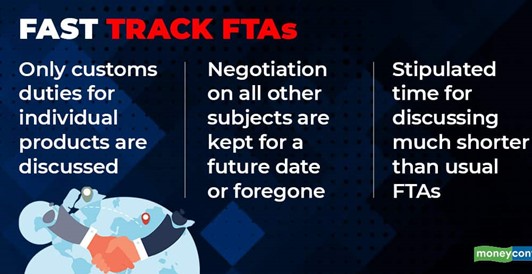
Source:
- What are fast track FTAs?
- India will fast track trade deals with six nations: Commerce Secretary
- India set to fast-track FTAs with six nations
Image Source:
Women to take NDA Exams
- Context: The Supreme Court in an interim order directed that women be allowed to take up the entrance examination for National Defence Academy conducted by the Union Public Service Commission (UPSC).
- The present public interest petition raised the issue of violation of Articles 14, 15, 16 and 19 of the Constitution of India by denying the opportunity to eligible and willing female candidates to join the National Defence Academy.
- The interim order of the SC comes after a year of its landmark verdict granting permanent commission to women officers of the Indian Army serving under Short Service Commission.
- The apex court stated that that the “policy decision” to bar women from admission to the NDA “is based on gender discrimination”.

Sources:
- Supreme Court lets women sit for NDA exam, says policy based on gender bias
- In equality push, SC allows women to take NDA exam
Image Source:
Swaption Deal
- Context: Private sector lender ICICI Bank has finalized India’s first set of swaption deals with HSBC and Standard Chartered Bank.
- An Interest Rate Swaption is an option on interest rate swaps. A swaption gives the buyer the right, but not the obligation, to enter into an interest rate swap.
- It aims to provide risk management in the country’s interest-rate derivatives market that needs to introduce world-class solutions to draw more overseas funds into local debt assets.
- Through this mechanism, companies and individuals can protect themselves against changes in market interest rates and can also be used to increase or refine the holder’s risk profile.
- In 2019, RBI allowed swaption deals under its new guidelines on Rupee Interest Rate Derivatives (Reserve Bank) Directions, 2019.
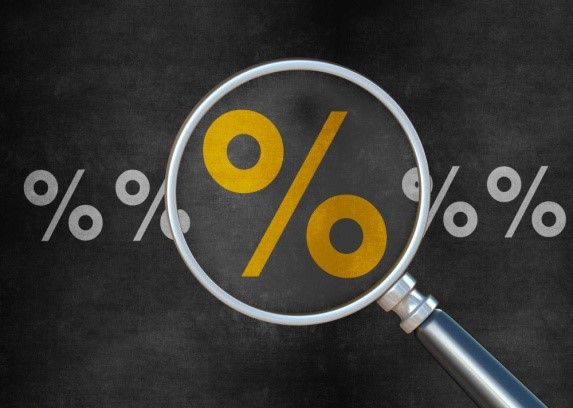
Sources:
- Swaption-Swap Option
- In a first, ICICI, StanChart and HSBC enter ‘swaption’ deals
- Interest Rate Swap Option
Image Sources:
The Police We Need
Essence: Taking the example of Ranjeeta Sharma who commanded the prestigious passing out parade at the National Police Academy (NPA), the article throws light over the fact that an ideal Police Officer should be a healthy balance of Brain and Brawn and an all-rounder capable of handling challenges on daily basis. The article praises the technical knowledge of the young recruits, both officers and lower rank personnel, making them better at public regulations and at solving crimes. Citing the examples of Nirbhaya Case of 2012, and different charges of corruption and sexual harassment against senior Police Officers recently, the article talks about the overall revamp the force needs to fulfill its role as public servant and maintaining law and order. The article emphasizes on the role of NPA in instilling these qualities in Young Officers to make the force corruption free, public friendly and the police force India needs.
Why you should read this article?
- To understand the need for reforms needed in the police force.
- To understand the ideal qualities of a Police Personnel
Source:
How can we guarantee the Speaker’s impartiality?
Essence: The article starts by giving an example of the washout of the monsoon session of the Parliament and predicts the same will continue for the upcoming sessions too. The root cause for the decline in the functioning of legislatures in India is the lack of independence and impartiality of the Speaker. Speaker has important powers such as the discretion to permit an adjournment motion or to admit a calling attention notice, which are important to hold the executive responsible to the legislature. The partisan conduct of speakers in state assemblies has been highlighted by several Supreme Court judgments on the anti-defection law. Speaker being a member of a political party is against the national interest and he/she must resign from the political party after becoming a speaker.
Why should you read this Article?
- To understand the essential qualities a speaker must have to run the house effectively.
- To know about the powers and duties of a speaker and what needs to be done for the speaker to be impartial and independent.
Source:
What women bring to the 21st century workplace
Essence: Women comprise 48 per cent of India’s population. Yet, barely a fraction of them are empowered to become active drivers of India’s economic growth. Most of the large companies are demanding “smart generalists”. Hence, traits such as empathy, compassion and sensitivity that women are gifted with are actually strengths not weakness that leaders should equip themselves with to solve problems in today’s work world. For this, a multi-stakeholder approach needs to be adopted to ensure that gender, type of college and income background does not put any woman at disadvantage. Also, corporates and male leaders in positions of power must make an active effort towards creating equal opportunities and a secure environment.
Why should you read this article?
- To get an overview of women participation in India’s economic growth and factors causing hindrance in their growth.
- To know what the possible solutions could be to tackle the same.
Sources:
Kudumbashree: Empowering one, empowering all
Aim of Kudumbashree
- Kudumbashree is Kerala’s poverty eradication mission with an aim to eradicate absolute poverty.
- The Mission follows a process approach rather than a project approach.
Strategy
- It recognises promotion of Self Help Group as effective strategy by bringing women together from all spheres of life to fight for their rights
- Women work on a range of issues such as health, nutrition, agriculture, income generation activities and seeks micro credit.
Distinguishing features
- The universality of reach with focus to bring every poor woman in the state within its fold.
- Community interface in local governance with respect to social infrastructure, employment generation, leading to transformation of the local governance from welfare to entitlement-based approach.
Outcome
- Women empowerment, reduction of poverty, collective participation of citizens in governance, achieve equity and gender justice.
Where can we use this case study?
- GS Paper1: Role of Women and Women’s Organization, Social Empowerment
- GS Paper2: Development Processes and the Development Industry — the Role of NGOs, SHGs
- GS Paper 3: Inclusive Growth.
Sources:
Share the article
Get Latest Updates on Offers, Event dates, and free Mentorship sessions.

Get in touch with our Expert Academic Counsellors 👋
FAQs
UPSC Daily Current Affairs focuses on learning current events on a daily basis. An aspirant needs to study regular and updated information about current events, news, and relevant topics that are important for UPSC aspirants. It covers national and international affairs, government policies, socio-economic issues, science and technology advancements, and more.
UPSC Daily Current Affairs provides aspirants with a concise and comprehensive overview of the latest happenings and developments across various fields. It helps aspirants stay updated with current affairs and provides them with valuable insights and analysis, which are essential for answering questions in the UPSC examinations. It enhances their knowledge, analytical skills, and ability to connect current affairs with the UPSC syllabus.
UPSC Daily Current Affairs covers a wide range of topics, including politics, economics, science and technology, environment, social issues, governance, international relations, and more. It offers news summaries, in-depth analyses, editorials, opinion pieces, and relevant study materials. It also provides practice questions and quizzes to help aspirants test their understanding of current affairs.
Edukemy's UPSC Daily Current Affairs can be accessed through:
- UPSC Daily Current Affairs can be accessed through Current Affairs tab at the top of the Main Page of Edukemy.
- Edukemy Mobile app: The Daily Current Affairs can also be access through Edukemy Mobile App.
- Social media: Follow Edukemy’s official social media accounts or pages that provide UPSC Daily Current Affairs updates, including Facebook, Twitter, or Telegram channels.

